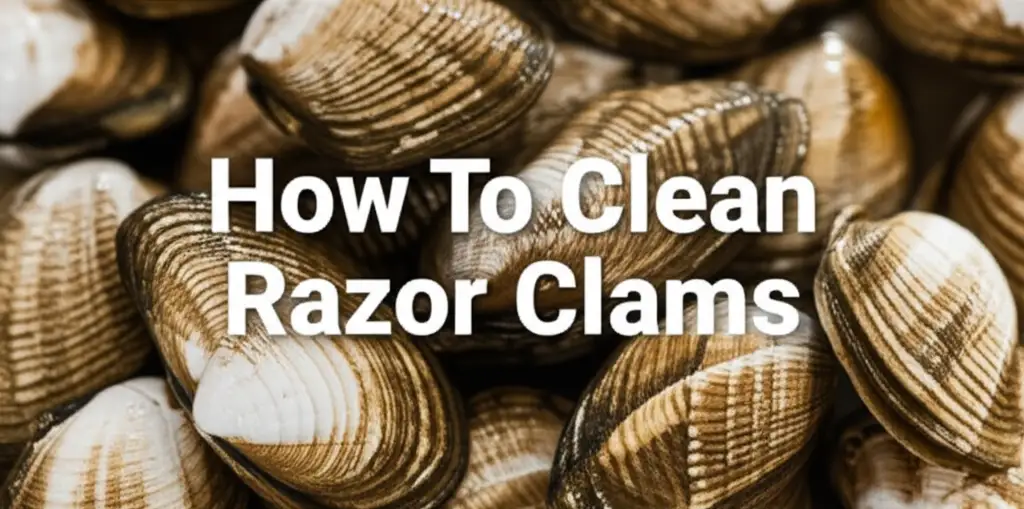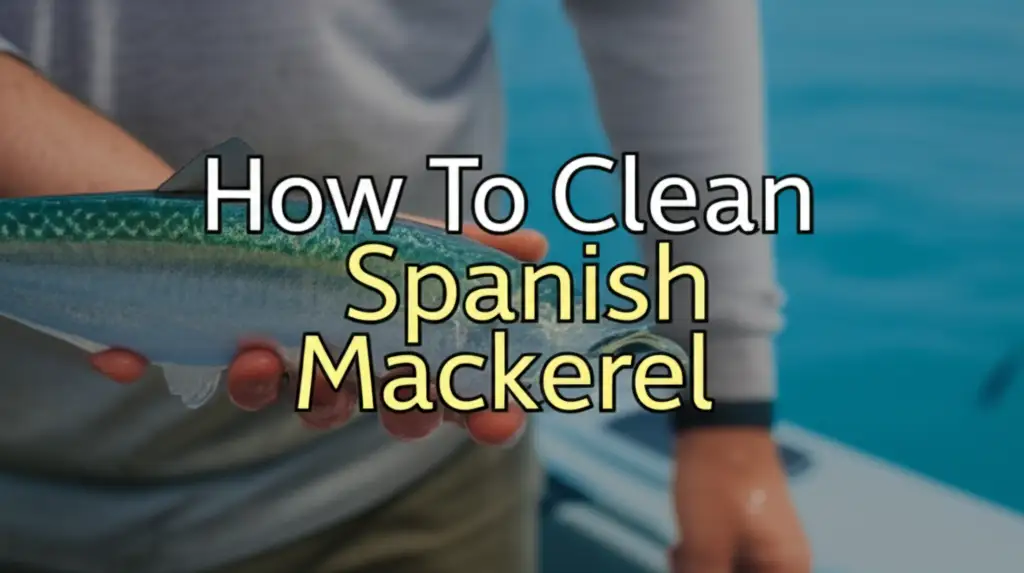· Seafood Preparation · 13 min read
How To Clean Dungeness Crab

Master How To Clean Dungeness Crab Easily
Dungeness crab offers some of the sweetest meat from the ocean. Many people love eating it. However, the idea of preparing a whole, live crab can feel scary. You might wonder how to clean Dungeness crab without trouble. This guide removes the mystery.
I want to show you simple steps to get your crab ready for cooking. Cleaning Dungeness crab fresh at home ensures the best flavor. This process is not hard. It simply requires knowing the right steps. We will cover preparing tools, humanely dispatching the crab, removing unwanted parts, and properly sectioning it. You will learn to clean Dungeness crab safely and efficiently. By the end, you will feel confident to handle this seafood favorite.
Takeaway
- Gather all tools before starting the cleaning process.
- Dispatch the crab humanely and quickly.
- Remove the top shell, gills, and internal organs thoroughly.
- Rinse the cleaned crab sections well under cold water.
- Store cleaned crab meat properly if not cooking immediately.
Dungeness crab cleaning involves humanely dispatching the live crab, twisting off the top shell, scraping out the internal organs and gills, and then rinsing the body thoroughly under cold water. You then separate the body into halves, making it ready for cooking or cracking open to extract the delicious meat.
Getting Started: Essential Tools to Clean Dungeness Crab
Preparing to clean Dungeness crab is simple when you have the right items. You do not need many special tools. Basic kitchen items work well. Having everything ready makes the cleaning process smooth. This saves time and reduces mess.
First, you need a large cutting board. This provides a stable surface for the crab. A sturdy board also protects your countertops. Next, get a sharp, heavy knife. This knife helps separate parts of the crab easily. A cleaver also works well for this task. You will also need a large bowl. This bowl collects discarded parts. It keeps your workspace clean. A good stiff brush or scrub pad is also useful. This helps clean the crab body thoroughly.
You should have a colander or strainer ready too. This helps rinse the crab sections under running water. A pair of kitchen shears can be helpful for smaller tasks. They can trim away fine membranes. Finally, wear gloves if you prefer. This keeps your hands clean. It also offers a better grip on the crab. Having these tools ready sets you up for success.
- Large, Sturdy Cutting Board: For stable work surface.
- Sharp, Heavy Knife or Cleaver: To separate the crab parts.
- Large Bowl: For waste collection.
- Stiff Brush or Scrub Pad: For scrubbing the crab body.
- Colander or Strainer: For rinsing.
- Kitchen Shears (Optional): For trimming.
- Gloves (Optional): For grip and hygiene.
Make sure your workspace is clear. Clear space helps you focus on the cleaning steps. This preparation ensures you can clean Dungeness crab quickly and without any fuss. Being prepared leads to a better experience overall.
Humane Steps to Dispatch Dungeness Crab Safely
Working with live Dungeness crab needs a humane approach. Dispatching the crab quickly is important. This ensures a clean kill. It also keeps the meat quality high. A quick dispatch reduces stress on the animal.
One common method involves chilling the crab first. Place the live crab in a cooler. Fill the cooler with ice. Let the crab sit there for 20-30 minutes. The cold temperature slows down its metabolism. This makes it less active. It enters a sleepy state. This method is often called “putting the crab to sleep.”
After chilling, you can use a knife to dispatch it. Turn the crab onto its back. Locate the small triangular flap on its belly. This is called the apron. Lift the apron. Insert a sharp, heavy knife into the small hole revealed beneath the apron. Push the knife firmly through the crab’s body, aiming towards the head. This severs the nerve ganglia. The crab will stop moving almost immediately. This is a very fast way to dispatch the crab.
Another option is to quickly immerse the crab in boiling water. Have a large pot of boiling water ready. Hold the crab by its shell, being careful of its claws. Plunge it headfirst into the boiling water. This method is quick. It instantly kills the crab. Some people prefer this method for its speed. No matter which method you choose, safety is key. Always handle live crabs with care. Their claws can pinch hard. Now that your crab is dispatched, you are ready for the next step of the Dungeness crab cleaning process.
Remove the Carapace: How to Clean Dungeness Crab’s Top Shell
Removing the top shell, also called the carapace, is the first major step in Dungeness crab cleaning. This part might seem tricky at first. It becomes easy with practice. The carapace holds the main body and guts. Taking it off opens up the crab.
Place the crab on its back on your cutting board. The belly side should face up. You will see a small, triangular flap on the underside. This is the apron. For male crabs, the apron is narrow and pointed. For female crabs, it is wider and rounded. Pry the apron away from the body. You can use your thumb or the tip of your knife. The apron is usually tucked in tightly.
Once the apron is lifted, grab the main body of the crab. Use your other hand to grasp the top shell. Pull the top shell upwards and away from the body. It might take a firm tug. The carapace should separate from the body fairly easily. You will hear a tearing sound. Some internal organs and liquid will likely come with the shell. This is normal. Dispose of the shell and any attached guts immediately.
After removing the top shell, the main body of the crab is exposed. You will see the gills, the mouthparts, and various internal organs. These parts are not edible. They need to be removed. Removing the carapace is a quick and satisfying step. It reveals the parts you need to clean. This prepares the Dungeness crab for further processing. You are now ready to tackle the internal cleaning.
Purge the Innards: Cleaning Gills and Organs from Dungeness Crab
After removing the top shell, you will see the crab’s internal structure. This next step focuses on removing all non-edible parts. Cleaning these parts thoroughly ensures your Dungeness crab meat tastes pure and delicious. I find this part satisfying as the crab transforms.
First, identify the gills. These are spongy, feathery structures. They are located on both sides of the crab’s body. They look like gray or brown triangles. Some people call them “dead man’s fingers.” These gills filter water. They are not edible. You must remove them. Use your fingers or a stiff brush. Simply pull or scrape them away from the body. They detach quite easily. Discard them right away.
Next, focus on the central part of the body. You will see a yellowish or greenish substance. This is the crab’s hepatopancreas, or “crab butter.” Some people consider this a delicacy. However, it can accumulate toxins. For general safety and cleanliness, I recommend removing it. Use a spoon or a small brush to scrape it out. Remove any other loose organs or dark bits. You want the central cavity to be clean.
Look at the mouthparts and mandibles at the front. These are hard and spiky. They are also not edible. Twist or break them off from the front of the body. Some people also remove the eyes. Ensure all the soft, dark internal matter is gone. Once these steps are complete, the crab body will look much cleaner. It will be ready for a good rinse. This thorough cleaning process leaves only the good parts of your Dungeness crab.
Sectioning the Body: Preparing Dungeness Crab for Cooking
Once you have removed the shell, gills, and internal organs, the Dungeness crab is almost ready. The next step is to section the body. This makes the crab easier to handle. It also helps in cooking. Properly sectioning allows heat to cook the meat evenly.
Hold the cleaned crab body firmly. You will notice a natural seam or line running down the center. This line divides the body into two halves. Place your sharp, heavy knife along this line. Press down firmly to cut the crab body in half. You might need to rock the knife a bit. The shell is tough. This cut separates the body into two large pieces. Each piece will have legs attached.
After cutting in half, you can choose to further section these halves. For example, if you want smaller portions, cut each half again. This creates quarter pieces. Each quarter will have two or three legs. This size is perfect for individual servings. It also makes cracking easier. The legs remain attached to the body sections. This keeps the meat together.
Sometimes, you might want to separate the legs entirely. You can twist or cut the legs off at the joint where they meet the body. This is useful for recipes that just use leg meat. However, keeping them attached to body sections is common. It holds more delicious meat in the body cavity. This clean separation makes preparing your Dungeness crab much simpler. It readies it for any cooking method. This is similar to how to clean crab legs for cooking individual pieces.
Washing and Storing Your Cleaned Dungeness Crab
After all the internal parts are removed and the crab is sectioned, a final wash is essential. This step removes any lingering bits of internal organs. It also washes away loose membranes. This ensures your Dungeness crab is perfectly clean and ready for cooking.
Take the sectioned crab pieces. Place them under cold, running water. A kitchen sink with a strong spray works well. Use your hands or a stiff brush. Scrub all surfaces of the crab. Pay attention to crevices and joints. You want to wash away any remaining yellow or green matter. Rinse until the water runs clear. This means no more impurities are coming off the crab. A thorough rinse is very important for taste and hygiene. This final wash prepares the crab for its culinary journey.
Once rinsed, gently pat the crab sections dry with paper towels. Removing excess water helps prevent dilution of flavors during cooking. It also helps if you plan to sauté or roast the crab. Dry surfaces brown better. Your Dungeness crab is now completely clean.
If you plan to cook the crab immediately, you are ready. If not, proper storage is vital. Place the cleaned, dried crab sections in an airtight container. You can also wrap them tightly in plastic wrap. Then, place the container in the coldest part of your refrigerator. Cleaned crab should be cooked within one to two days. For longer storage, you can freeze the crab. Wrap individual sections tightly in plastic wrap. Then place them in freezer bags. They can last up to a few months in the freezer. Remember, how to clean soft shell crab might differ slightly for storage due to their delicate nature.
Essential Safety for Cleaning Dungeness Crab
Safety is a top priority when handling and cleaning Dungeness crab. These creatures have powerful claws. They also have sharp shells. Taking proper precautions prevents injuries. It also ensures food safety. I always stress safety first.
First, always be careful with live crabs. Even after chilling, they can still move. Their claws can deliver a painful pinch. Use tongs or thick gloves when handling a live crab. Hold the crab from the back of its shell. This keeps your hands away from the claws. If a crab pinches you, do not pull away quickly. This can tear your skin. Instead, immerse the crab and your hand in water. The crab often lets go.
Maintain a clean work area. Crab guts and liquids can spread bacteria. Clean your cutting board and tools thoroughly after use. Use hot, soapy water. A diluted bleach solution can also sanitize surfaces. This prevents cross-contamination. Always wash your hands well before and after handling raw seafood. This is a basic food safety rule.
Be careful when using sharp knives. A slip can cause injury. Keep your fingers away from the blade. Always cut away from your body. A stable cutting board prevents slips. If your knife is dull, sharpen it. A sharp knife is safer than a dull one. It requires less force to cut.
Finally, dispose of crab waste properly. Place all shells and guts in a sealed bag. Dispose of them quickly. This prevents odors and pests. Following these safety tips makes the Dungeness crab cleaning process secure. You can enjoy your meal without worries.
FAQ Section
How do I humanely kill a Dungeness crab?
To humanely kill a Dungeness crab, place it in an ice bath for 20-30 minutes. This chills it into a dormant state. Then, turn the crab on its back. Insert a sharp, heavy knife through the apron into the nerve ganglia behind the mouthparts. This dispatches the crab quickly and efficiently.
What parts of a Dungeness crab are not edible?
The non-edible parts of a Dungeness crab include the top shell (carapace), the gills (feathery “dead man’s fingers”), the mouthparts, and the internal organs/guts (except for the yellow “crab butter” which some people eat). You must remove all these parts during the cleaning process before cooking.
Can I clean Dungeness crab ahead of time?
Yes, you can clean Dungeness crab ahead of time. After cleaning, rinse the sections thoroughly and pat them dry. Store the cleaned crab in an airtight container or tightly wrapped in plastic in the coldest part of your refrigerator. It should be cooked within one to two days for the best quality and safety.
How do I store cleaned Dungeness crab?
Store cleaned Dungeness crab in an airtight container or wrapped tightly in plastic wrap. Keep it in the coldest part of your refrigerator. For longer storage, freeze the cleaned crab sections. Wrap them individually and place them in freezer-safe bags. They can last for several months.
Is the yellow stuff inside Dungeness crab safe to eat?
The yellow or green substance inside a Dungeness crab is called the hepatopancreas, often referred to as “crab butter” or “tomalley.” While some people consider it a delicacy and eat it, it can accumulate toxins. It is generally recommended to remove it for overall food safety, especially if you are unsure of the crab’s origin.
What is the best way to rinse cleaned Dungeness crab?
After removing all non-edible parts, rinse the Dungeness crab sections under cold, running water. Use a stiff brush or your hands to scrub away any remaining internal matter, loose membranes, or impurities. Continue rinsing until the water runs completely clear, ensuring the crab is thoroughly clean.
Conclusion
Learning how to clean Dungeness crab opens up a world of culinary possibilities. It transforms a live creature into delicious meal components. We have covered every step, from preparing your tools to the final rinse and storage. You now know how to humanely dispatch the crab, remove its top shell, and clean out all the non-edible parts.
Remember, a clean Dungeness crab means better flavor and a more enjoyable eating experience. Do not shy away from this process. It is simpler than it appears. With practice, you will become very efficient. Now you can confidently tackle your own fresh Dungeness crab. Get ready to impress your friends and family. Enjoy the incredibly sweet and tender meat this amazing seafood offers. Your next crab feast starts with these cleaning steps.
- Dungeness crab cleaning
- fresh crab preparation
- seafood cleaning




